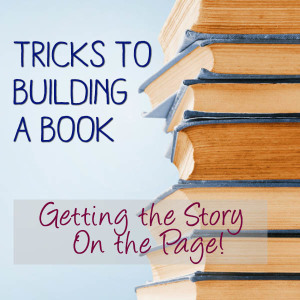My brother ran a ½ marathon last weekend. For him, this is a regular occurrence – he has a wall full of finisher medals from marathons and iron man competitions around the country. I love seeing him cross the finishing line – so much triumph in his face.
It’s exactly how I feel when I finish a novel.
I handed him a water bottle as he met us in the finishers area. “I’d love to run a marathon someday,” I said.
He leaned over, groaning a little, stretching out. “You might not say that around mile 10,” he said. “When everything starts to hurt and you think. . .why did I do this?”
Yeah, he’s right. I amended my statement to reflect truth: “I’d like to SAY I ran a marathon!”
We laughed, but that’s a little like the conversation I have with aspiring authors.
“I’m going to write a book.”
I love it when I hear people declare this! I love standing at the edge of a brand new project, seeing the possibilities of the story, the twists and turns, the character growth, the amazing ending. So much potential embodied in that statement.
And so much struggle. Because writing a great story doesn’t just happen. From idea to finished story, each chapter and step in the character journey is wrestled out of our brain (and hearts). As Hemingway is reported to have said, “It is easy to write. Just sit in front of your typewriter and bleed.”
The problem with writing a great novel is that we want to rush ahead to the good stuff, to the chapters and happy ending without stopping to take the time to work through each step. But without completing the characterization and plotting, the themematic exploration and developing the storyworld and the tension, it’s akin to me jumping off my sofa, grabbing my old running shoes and leaping into the crowd.
I’m going to die, long before mile 10!
 And this is why, I believe, aspiring authors give up around chapter 7. (or before). Because enthusiasm can only fuel us so far down the journey. Without proper preparation, we’ll fizzle out when we get to the mire of Act 2.
And this is why, I believe, aspiring authors give up around chapter 7. (or before). Because enthusiasm can only fuel us so far down the journey. Without proper preparation, we’ll fizzle out when we get to the mire of Act 2.
At MBT, we have a Peptalk every Thursday night to encourage and train our members on the craft of storycrafting. This year, one Thursday a month, we’re building a book together, working through the process step by step.
Last week, we opened up our private Peptalk to the public to take a peek at what we do. We quickly summed up the process, then talked about how/when to craft the Inciting Incident. We outlined our goals for Chapter 1, then Rachel Hauck and I shared some tips for getting the story on the page.
And, because we had such an overwhelming response, I thought it might help if we shared the replay.
Get the video replay of the class – Build-A-Book: Inciting Incident and Getting the Story on the Page. (You’ll also get the PDF Slides that are rich in the content we talk about.)
Quickly, here’s a rundown of the process we cover:
- Start with your Story Seed (or idea that sparked the story)
- Decide on your Genre
- Discover your Setting
- Create your Characters
- Find the Dark Moment Story
- Use the Story Equation (a MBT Tool) to build the plot
- Put your elements together in a loose plot (using our grid for story structure)
- Ask your Storyquestion
- Create a short premise
- Create the Act 2 elements (we use a 4 Act plotting structure)
- Decide on your Inciting Incident
- Craft your home world/Chapter 1 elements
- Put together your plot & Tell Yourself the Story
WRITE!
You can run a marathon (aka, write a brilliant novel!) You just need to plan for success.
Have a great writing week and Go! Write Something Brilliant!
Susie May

